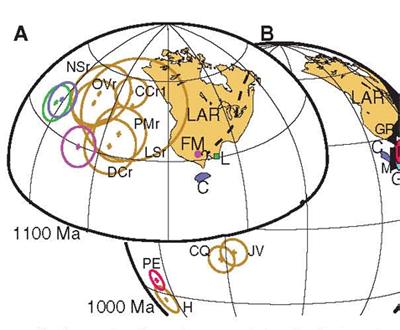Antarctexas: the Coats Land block of East Antarctica as a 'tectonic tracer' for Laurentia in pre-Pangea Earth
By:
Ian Dalziel, UTIG, and
Staci Loewy, JSG
| When: | Friday, Sept. 16, 2011, 10:30 a.m. to 11:30 a.m. Join us for coffee beginning at 10:00 a.m. |
| Where: | Seminar Conference Room, 10100 Burnet Road, Bldg 196-ROC, Austin, Texas 78758 |
| Host: | Charles Jackson, UTIG |

Abstract
The East Antarctic craton appears to have separated from another craton during the Neoproterozoic. The Southwest U.S.-East Antarctica (SWEAT) hypothesis suggested that was Laurentia, the ancestral core of North America. Alternative hypotheses juxtapose different cratons with Laurentia. Recent data, however, seems to favor the 'SWEAT fit.'
This interpretation, however, must be reconciled with evidence that separation of these cratons predated not only the amalgamation of the complete Gondwana supercontinent, but even of its East Antarctic "keypiece." This includes, among other tectonic entities, the Grunehogna and Coats Land crustal blocks along the Weddell Sea margin. The former is a fragment of the Kalahari craton of Africa and the latter appears to have been separately rifted from the Texan margin of Laurentia.
Undeformed rhyolite and granophyre in the Coats Land crustal block of East Antarctica, dated as 1112 ± 4 Ma, are identical in age to both the Umkondo large igneous province (LIP) of the Kalahari craton (southern Africa) and the early Keweenawan LIP of Laurentia (North America). Although marine and satellite data demonstrate that Coats Land was close to Kalahari within the Gondwana supercontinent, the Coats Land rocks yield Pb isotope compositions strikingly distinct from those of the Umkondo province, yet indistinguishable from rocks of the Keweenawan province (Loewy et al., Geology, September 2011). The anorogenic Red Bluff granitic suite, along the present-day southern Laurentian margin in the Franklin Mountainsof Trans-Pecos Texas is of comparable age, general rock type, and Pb isotope composition to rocks of Coats Land and may provide a piercing point for a Coats Land-Laurentia link. Paleomagnetic poles permit the Coats Land block to be close to this part of Laurentia ca. 1100 Ma and allow juxtaposition of Kalahari and southern Laurentia ca. 1000 Ma. The Coats Land crustal block may therefore be a critical tectonic tracer for placing Laurentia within late Mesoproterozoic and Neoproterozoic paleogeographic reconstructions. If this hypothesis is correct, Laurentia collided with the Kalahari craton along Antarctica's Maud orogen, which would represent a continuation of the ca. 1000 Ma Grenville orogen of eastern and southern Laurentia.
The sequence of tectonic events is envisaged to have been: 1. Formation of a craton including Laurentia and the Mawson craton that extended from South Australia along the Transantarctic margin to the Shackleton Range during Archaean and Palaeoproterozoic times; 2. Suturing of the Texan margin of Laurentia to the Kalahari craton of Africa along the Grenville, Namaqua-Natal and Maud orogenic belts ca. 1.0 Ga; 3. rifting of the East Antarctic margin (Mawson craton) from Laurentia ca. 0.8 Ga; 4. Suturing of the Mawson craton to the Coats Land crustal block and separation of Laurentia from newly amalgamated Gondwanaland during the latest Neoproterozoic to Early Cambrian.




